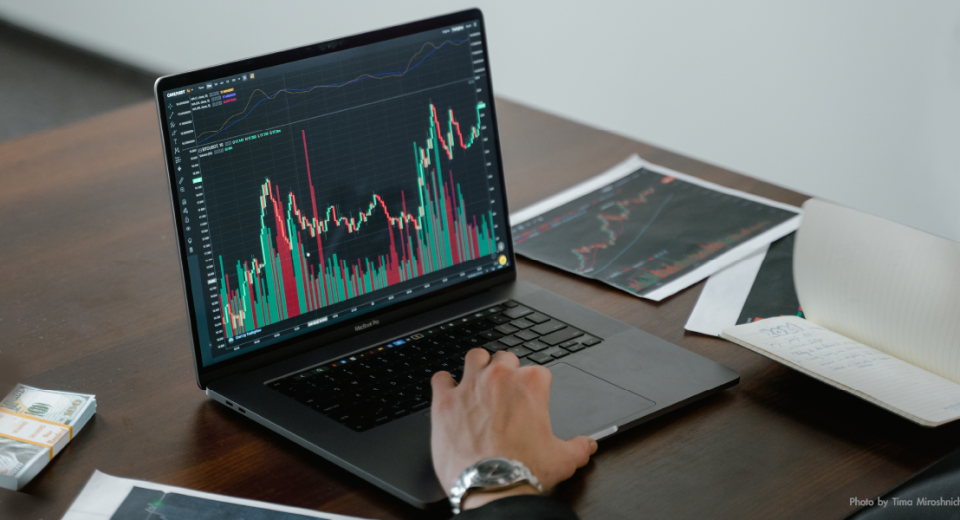Position Trading vs. Swing Trading

The trading strategy that you choose for the financial markets needs to be based on your trading goals, market environment, assets to be traded, along with the inherent risks associated with the strategy. But when it comes to a market where over 170 different currencies are traded 24 hours a day, you certainly need a tried and tested strategy. In the forex market, position and swing trading are among the most popular trading strategies.
The primary difference between them is the amount of time taken to buy and sell an asset. While position trading is more like a “buy-and-hold” strategy, where traders sometimes hold positions for years, swing trading involves a timeframe of a few days. Of course, both come with their own pros and cons.
Position Trading
This is a long-term trading approach, where traders hold positions for months, sometimes even years. Some may consider this strategy to not be a good choice for active-trading purposes, but advanced traders beg to differ. Timeframes chosen for the strategy range from daily to monthly. And, there are various technical indicators to assess the direction of the price trend.
Position traders are concerned with long-term outcomes. Daily price movements and short-term market corrections, which can reverse price trends, do not affect trading decisions. Such traders allow their positions to fluctuate in-sync with the general market trends over the short term.
Position traders strongly rely on fundamental analysis, to map the outcomes over a long-term future. They follow long-term historical price trends to evaluate which assets would give them the preferred financial outcome. They also use technical analysis tools to find the right entry and exit points. In addition to that, technical tools allow them to identify long-lasting trends and potential points of reversals.
There are two ways to do this:
- Trade assets that have strong trending potential, but still haven’t started trending
- Trade assets that have already begun trending and are likely to hold that trend for a long time.
Some of the most common analytical tools used for position trading are the 200-day Moving Average, oscillating indicators like MACD (Moving Average Convergence Divergence) and the Relative Strength Index (RSI). Some traders confuse position trading with trend trading, but the latter differs in that it is strongly based on technical analysis, whereas fundamental analysis is critical for the former.
Advantages and Disadvantages of Position Trading
Here’s a look at some of the common pros and cons of position trading:
Pros
- It is a long-term strategy, which means that traders don’t need to constantly monitor their positions.
- Stress tends to be lower when you aren’t concerned with short-term price fluctuations.
- Less risky than many other trading strategies, such as scalping, swing trading and transition trading.
Cons
- Low liquidity issues, since capital is locked up for the long term. It also needs a larger capital base, on account of wider stop-losses.
- Requires thorough understanding of market fundamentals. Position trading might look easy, but significant research is required for effective trading decisions.
- Sudden trend reversals, after a considerable period of stability, can cause positions to bleed.
- Lesser number of trades usually means lower profits.
Swing Trading
In swing trading, traders capitalise on buying and selling in the interim lows and highs of an overall trend. So, compared to position trading, swing trading is a more medium-term strategy. Positions are not held for more than a few days or, at the most, a week. But, compared to day trading, swing trading is a slower strategy. Both are often confused with each other but remember, day traders close positions in a matter of minutes.
Swing trading is applied on the sedentary markets, where asset prices rise and fall at periodic intervals, in wave-like patterns, without exhibiting a long-term bullish or bearish trend. In fact, significant movement of prices in a particular direction will diminish the outcome of swing trading. The timeframes chosen here are typically 60 minutes, 24 hours and 48 hours.
Capturing the “swing” of the market is the main motive here, so traders usually:
- Buy support and sell resistance
- Trade the bounce of the moving average
- Trade break-outs and pull-outs
Technical analysis is majorly used, in comparison to position trading. These indicators are used to assess whether specific assets possess momentum and whether markets are ranging or not. So, it is a good idea to understand the use of Japanese Candlestick Patterns and Support & Resistance levels. Some common technical indicators used by swing traders are Fibonacci Retracement and On-Balance Volume.
Advantages and Disadvantages of Swing Trading
Pros
- More trading opportunities in comparison to position trading.
- Positions are closed faster, so risks of sudden long-term trend reversals can be avoided.
Cons
- Heavy reliance on technical indicators to predict peaks and valleys of price moves.
- Fundamental analysis is not in the picture, which make decisions riskier.
- Carries overnight risk of price fluctuations.
- One cannot gain on big trends, unlike position traders.
- Chances of encountering a lot of false breakouts.
- Traders might miss moves, if price doesn’t fall in the underlying area
Which is Better?
It is a good idea to first decide on whether you prefer short or long-term goals before choosing a trading strategy. For instance, if you are looking to build towards your retirement years, you might favour position trading, since it gives you sufficient time to achieve your investment goals, without needing to take on riskier short-term positions.
For professional traders, swing trading is more viable than position trading, since the latter offers fewer chances of gains. The market condition has to be studied as well. If the market is showing a full-blown bullish trend, taking on a long-term position could be risky. The bullish trend will end at some point, and the market corrections could eat away into the profits made when the asset was purchased.
The financial markets tend to be unpredictable. So, careful research is always recommended before adopting any trading strategy. Choose a broker who offers rich educational resources and good support to help with informed decision making. In addition, regardless of the strategy you choose, the importance of proper risk management, through stop-losses and take profit, cannot be stressed upon enough.
Reference Links
- https://corporatefinanceinstitute.com/resources/knowledge/trading-investing/swing-trading/
- https://www.investopedia.com/articles/active-trading/100714/swing-trading-indicators-those-too-impatient-buy-and-hold.asp
- https://www.investopedia.com/articles/active-trading/11/four-types-of-active-traders.asp




